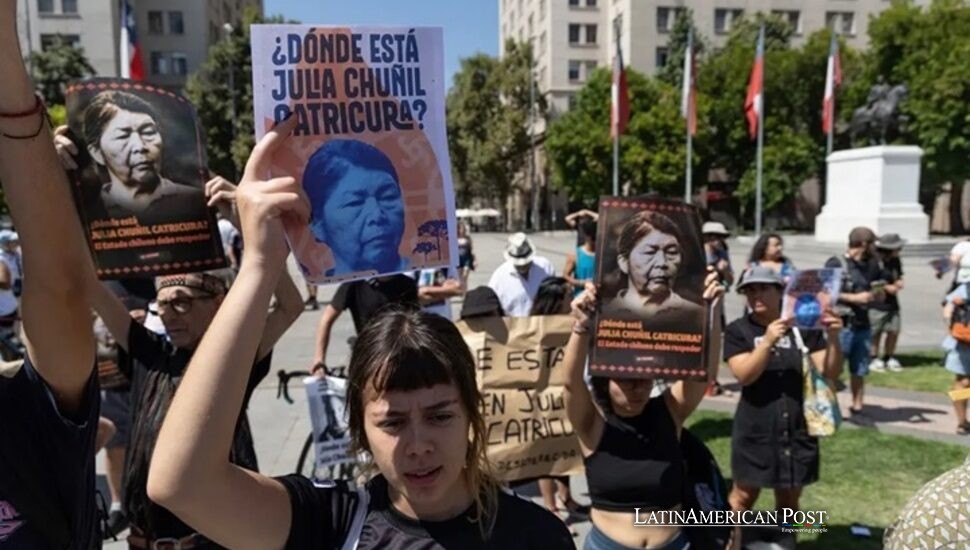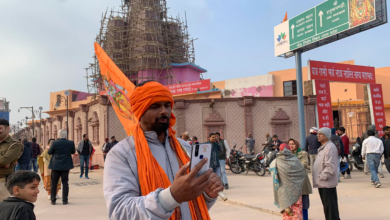Latin America Remains Perilous Battleground For Environmental Activists

Latin America leads global statistics for murdered environmental defenders, with hundreds losing their lives in recent years. As communities face intimidation from paramilitaries, real estate interests, and criminal groups, activists told Landscapes News about the relentless struggle to protect their homelands.
Understanding the Global Crisis
It is getting deadlier each year to stand in defense of rivers, forests, and Indigenous or Afro-descendant communities. According to 2023 data, 196 land and environmental defenders were murdered worldwide, and the majority came from Latin America. Four countries in particular—Brazil, Colombia, Honduras, and Mexico—accounted for over 70 percent of these killings.
Colombia recorded 79 killings, and Brazil followed with 25, placing them at the front of these statistics. The pattern of deaths points to long-standing persecution that defenders of land and nature have faced. Big companies that want to cut trees, dig mines, or start farms go after these local protectors. Criminal groups that take resources without permission also attack them to maintain profits. In many cases, state complicity or negligence compounds the danger. Activists told Landscapes News that they face not just the immediate threat of violence but also the psychological burden of living under constant siege.
“Latin America has long been a lethal region for those working to safeguard rivers, forests, and Indigenous and Afro-descendant peoples,” says one Colombian organizer. Indeed, behind every statistic of a lost life is a story of personal courage, deep-rooted activism, and families often left searching for truth. This article spotlights the experiences of some of those defenders, along with the patchwork of government initiatives designed to keep them alive.
Brazil’s Quilombola Communities Under Siege
In Brazil, “quilombos” emerged when escaped enslaved people formed settlements during colonial times. Today, these Afro-Brazilian territories maintain distinct cultural practices and collectively guard their ancestral lands. Yet, despite its constitutional enshrinement since 1988, recognition from the Brazilian government remains a painstaking process riddled with conflict.
One example is Elza,* who, alongside her daughter Carolina,* spoke to Landscapes News about living under state protection in Porto Alegre. More than 15 years ago, their quilombo secured official status, which should have bolstered their claim to ancestral lands. Instead, it triggered a wave of hostility from local gangs and real estate speculators intent on seizing the 58 hectares Elza’s community calls home.
“When we recognized ourselves and declared ourselves a quilombo, our peace was over,” recalls Elza. In 2008, she and her siblings were ambushed in an attack that killed her brother and sister. Struck by a bullet herself, she survived but has never walked freely without fear since. “I never leave home alone,” she says with a resigned smile. “We just defend our territory, where I was born and live. I always intuitively had to do it.”
Such violence reoccurred in 2022 when armed men attempted to take over an unfinished housing project in quilombo. In partnership with nearby quilombola settlements, advocates next to officials, Elza’s neighbors fought off the outside attackers. The police increased their presence in the area as a temporary measure. But threats to their safety continue to exist. Through her past work as a women’s group leader, Carolina takes pills to deal with the stress she faces. “We have our Black identity here, so that’s why they want us to vanish from this territory,” she says.
Elza and Carolina participate in Brazil’s federal protection program, which extends security measures such as police patrols and judicial support to threatened individuals. Administered through the Ministry of Human Rights and Citizenship, it supports over a thousand at-risk activists, including environmentalists and human rights defenders. “Without it, I don’t know if we’d be alive,” Elza says. Even so, day-to-day life remains overshadowed by the possibility of a repeat incident. As Carolina puts it: “We can’t deny our stories of pain, but we can still prevent more stories of pain.”
Young Defenders in Colombia’s Conflict Zones
The dangers in Colombia mirror those in Brazil but multiply against a backdrop of a decades-long internal armed conflict involving guerrillas, paramilitaries, and drug cartels. Here, land activism is intrinsically linked to deep-seated struggles over resource-rich territories. Many community leaders face menacing threats from multiple fronts—criminal syndicates, disreputable corporations, and, at times, state forces.
Among the young people stepping up is 26-year-old Afro-Colombian educator and activist Jesus Pinilla, who shared his experiences with Landscapes News. Pinilla hails from the Chocó Department in western Colombia, where the Atrato River is both a lifeline and a battlefield. The Atrato won a landmark 2016 legal ruling granting it personhood rights. “We are tasked with defending the river’s waters,” Pinilla explains, “but that comes with great risks. Mining companies often use heavy machinery that pollutes the river, harming the environment and our health.”
Pinilla joined the Network of Young Guardians of the Atrato at age 14. Though he has never faced a direct death threat, he knows plenty of peers who withdrew from activism because of fear. “The lack of safety is an issue, especially for many young people. We see no government support,” he laments. Pinilla points to pride in his Afro-Colombian heritage and a sense of duty to future generations when asked why he persists. “We want to teach children and teenagers to value their environment. That’s why we compose alabados—chants and songs that celebrate our bond with the Atrato.”
In its path toward legal protection of the river, defying criminals and polluting factories continues to pose major hurdles. “No one helps us with our mission,” Pinilla states. “The support comes from neighbors and fellow nature protection groups.” Yet, through these challenges, he notices small signs of change. Activists are forging new alliances with civic groups, occasionally capturing the attention of national authorities. But caution is essential as long as powerful interests remain entrenched in illicit operations. “There’s more that unites us than divides us,” Pinilla observes. “These hardships unify the community and remind us that we must protect each other—because if we don’t, no one else will.
Government Programs and Ongoing Gaps
Brazil and Colombia have set up government programs to protect threatened environmentalists, land defenders, and human rights advocates. Landscapes News interviewed officials and experts in each country, revealing that while these measures can be life-saving, they also face structural limitations.
More than 15,000 at-risk individuals in Colombia fall under the National Protection Unit (UNP). This includes members of Congress, mayors, journalists, and grassroots leaders, a broad swathe of civic actors deemed in danger. Some 9,000 are social leaders, among whom environmental activists represent a significant subset. Bulletproof vests, private escorts, and armored vehicles are typical forms of protection offered. “It’s a last resort measure,” explains Colombia’s Director of Human Rights at the Ministry of the Interior, Franklin Castañeda, to Landscapes News. “We’re also trying to address the root causes of violence, such as deep socioeconomic inequality and the presence of armed groups in resource-rich areas.”
Castañeda points out a need to transform how people view activism. “Through past decades, companies and government entities marked defenders as problems to eliminate,” he says. “In response, we must create open discussions for these people to do their work free from negative labels.” He adds that the Colombian government wants to scale up infrastructure—roads, internet access, public services—in remote regions to reduce the vacuum criminal or paramilitary groups exploit. Still, the legacy of internal warfare, which began in the 1960s, casts a long shadow, complicating attempts to implement reforms uniformly.
On Brazil’s side, the Program for the Protection of Human Rights Defenders, Communicators, and Environmentalists (PPDDH) works with 1,304 individuals, including Elza and Carolina. In an interview with Landscapes News, the program coordinator, Igo Martini, stressed the complexity of resolving root causes. “If we don’t solve the underlying issues, the program will continue responding to emergencies for another 20 or 40 years,” he says. Among these deeper problems are land-tenure disputes, real estate speculation, illegal deforestation, and institutional racism—targets for structural reform rather than short-term policing.
To tackle these challenges collectively, the PPDDH seeks to operate on three fronts: direct state protection, judicial support, and communal empowerment. “When communities are organized, they can share information more quickly with the authorities,” Martini explains. “That helps them respond faster to new threats.” However, critics argue that the Brazilian government’s ability to enforce environmental regulation has been weakened by budget cuts to agencies like Ibama (the Brazilian Institute of the Environment and Renewable Natural Resources). Without robust monitoring of logging, mining, and land invasions, activists remain vulnerable.
For example, the communities of Elza and Carolina depend heavily on local police patrols but also know that real estate and criminal interests can regroup if not thoroughly dissuaded. “They come back because the payoff is so big,” Carolina observes. “To them, we’re in the way of valuable land. But to us, it’s home.”
Strengthening Resistance and Hope
In conversation after conversation, the central theme remains that grassroots communities see themselves not as professional “environmentalists” but as people defending their homes and cultural heritage. From Quilombolas in southern Brazil to young guardians of Colombia’s Atrato River, there is an abiding desire to remain on ancestral land. “What would we be if we left?” Elza asks rhetorically. “This is who we are. We’re not going to give up.”
Activists share that more robust international collaboration could hold perpetrators to account, especially when exploitation extends across borders. They also argue for comprehensive reforms to guarantee fair land titles, sustain local economies, and reduce the impetus for criminal entities. “Our community stays alive, yet different structures need consideration,” Pinilla states. “Additional police presence does not address the root causes. The neighborhoods require resources to develop according to their residents’ vision.”
Through this lens, the value of these lands extends past mere environmental measurements. For Quilombolas, Afro-Colombians, Indigenous communities, and others, the land is a living repository of history, spirituality, and intergenerational knowledge. Understanding that dimension is crucial for forging genuine solutions. “We can’t just see a forest or river as an economic resource,” a Colombian environmental educator stresses. “Ultimately, it’s about us, our culture, our identity.”
Despite the peril, there are stories of partial victories. With heightened media coverage, government pledges, and occasional rulings in favor of local communities, more defenders see glimmers of hope. “We can’t deny our stories of pain,” Carolina says, “but we can still prevent more stories of pain.” For the families under threat, that balance between trauma and resilience forms the bedrock of their struggle.
As the statistics and personal testimonies make clear, Latin America remains ground zero for global environmental conflict. But behind every murder or threat is a mosaic of communities steadfastly refusing to surrender their heritage and ecosystems. Through increased government support, uniform legal enforcement, and public unity, activists protecting territories in Brazil, Colombia, and other regions could exist without persistent threats to their lives.
Also Read: Exploring Theories About Colombian Pablo Escobar’s Strange Death
But the path ahead presents obstacles. “Our mission continues,” Pinilla states. The territory, rivers, and natural spaces make up our identity. The duty falls on us to defend them.”
*Names have been changed.





